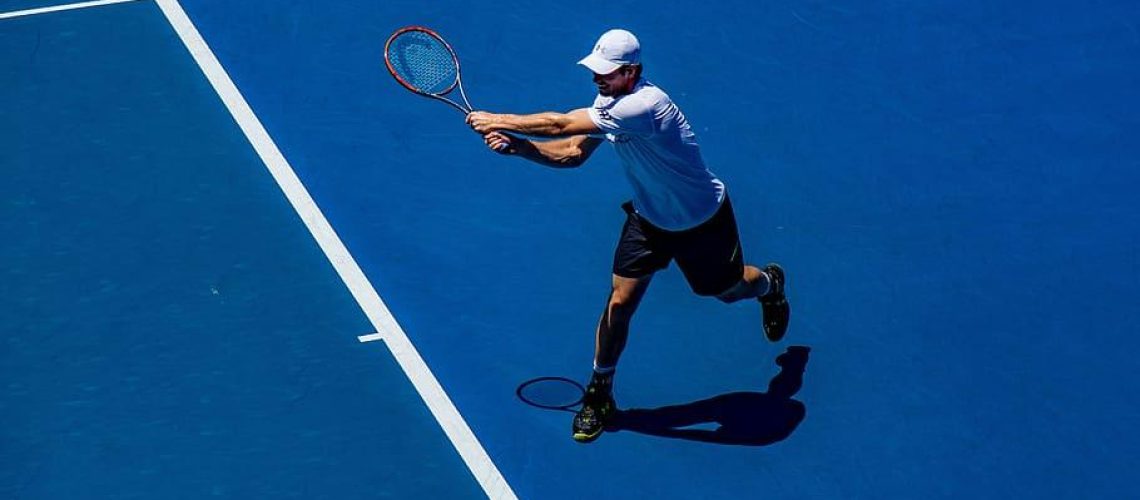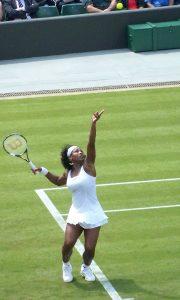We may earn money or products from the companies mentioned in this post.
Brief History of Tennis Balls

Tennis, a sport that has captivated players and spectators alike for centuries, owes its success in no small part to the humble tennis ball Over time, these balls have undergone incredible transformations in both materials and design, enhancing the game’s playability and enjoyment From their earliest origins as leather-wrapped spheres stuffed with hair or wool to today’s high-tech pressurized rubber balls covered in felt, tennis balls have come a long way
Evolution of Materials and Design
The evolution of tennis ball materials and design has been driven by a desire to improve performance and durability In the early days, players used balls made from leather or animal bladders filled with various substances such as sand or feathers As technology advanced, manufacturers began experimenting with rubber cores encased in cloth covers
In the late 19th century, the introduction of vulcanized rubber revolutionized tennis ball production This process involved heating natural rubber with sulfur to create a more durable material that could withstand the rigors of the game The development of pressurized balls followed soon after, allowing for better bounce consistency and increased speed
Different Types of Tennis Balls
Today, there are several types of tennis balls available on the market Each type is designed to cater to different playing surfaces (hard court, clay court, grass court) and player preferences
-
Regular Duty:
These balls are specifically designed for clay courts where they offer better grip due to their slightly softer felt cover -
Extra Duty:
Extra duty balls feature a harder felt cover that can withstand the abrasive nature of hard courts without losing their bounce too quickly -
Grass Court:
These balls have a more durable felt cover that is designed to withstand the unique challenges posed by grass courts
Importance of Understanding Ball Bounce in Tennis

The way a tennis ball bounces has a significant impact on gameplay and strategy Players who understand how the ball behaves can leverage this knowledge to their advantage during matches
Effects on Gameplay
The bounce of a tennis ball can vary depending on factors such as court surface, weather conditions, and ball type A higher bounce on clay courts allows players more time to set up their shots, while a lower bounce on hard courts demands quick reflexes and precise timing Adaptability to different bouncing conditions is crucial for success in tennis
Influences on Strategy
Understanding ball bounce in tennis also influences strategic decisions during matches Players can adjust their positioning, shot selection, and footwork based on how they anticipate the ball will bounce For example, knowing that a low-bouncing ball is likely to stay low after hitting the ground, players may opt for slice shots or approach the net for volleys
On the other hand, anticipating a high bounce may prompt players to position themselves farther behind the baseline or use topspin shots to control the trajectory of the ball better
By comprehending these nuances of ball bounce, players can gain an edge over their opponents and elevate their performance on the court
Remember this article is not yet concluded
Factors affecting the number of bounces a tennis ball can make

Tennis is a game of precision and strategy, where every bounce of the ball can make a difference But have you ever wondered what factors influence how many times a tennis ball bounces? Let’s explore the various elements that come into play:
Surface type and condition
1 Grass courts
Grass courts have their own unique characteristics that affect the bounce height and speed of a tennis ball The grass surface tends to be softer, resulting in a lower bounce compared to other court types This can make it challenging for players to anticipate how the ball will behave
Maintenance and weather conditions also play a significant role in determining the number of bounces on grass courts Regular mowing, watering, and rolling are essential to maintain an even playing surface Additionally, weather factors such as rain or heat can impact how the grass behaves, affecting both bounce height and speed
2 Clay courts
Clay courts offer different playing characteristics than grass courts The softness of clay allows for higher bounce heights and slower ball speeds compared to other surfaces
Maintenance is crucial for clay courts as well Regular watering ensures proper hydration levels in the clay, which affects its firmness and consistency Weather conditions like humidity or dryness can also influence how the clay surface behaves during gameplay
3 Hard courts
Hard court surfaces provide a different dynamic for tennis balls’ bouncing behavior Typically made of asphalt or concrete with an acrylic or synthetic coating, hard courts offer faster game pace due to their higher bounce heights
The maintenance requirements for hard courts involve regular cleaning and resurfacing to ensure optimal playing conditions As with other court types, weather conditions like temperature and humidity can influence the behavior of the ball on a hard court
Tennis ball characteristics
1 Type of ball: regular, extra duty, or high altitude
Tennis balls come in different types designed for specific playing conditions Regular balls are suitable for most standard court surfaces However, extra duty balls are specifically designed for use on harder surfaces such as clay or concrete High-altitude balls, on the other hand, are engineered to compensate for reduced air density at higher elevations
The type of tennis ball used can impact the number of bounces it makes during a match The materials used and their construction affect the ball’s elasticity and how it interacts with the playing surface
Physics behind bouncing balls
Understanding the physics behind bouncing balls is essential to comprehend why certain factors influence bounce count:
1 Coefficient of restitution (COR)
The coefficient of restitution refers to how much energy is retained by an object after a collision In tennis terms, it determines how efficiently a tennis ball bounces off the ground or racket strings A higher COR value indicates a more lively bounce, while a lower value results in a less energetic rebound
2 Impact velocity & angle
The impact velocity and angle at which the tennis ball hits the surface also affect its bounce count A faster initial velocity tends to result in more bounces due to increased energy transfer during collisions with the ground or racket strings
By considering all these factors – surface type and condition, tennis ball characteristics, and physics principles – players can better predict and adapt to how many times a tennis ball will bounce during gameplay
Experiments to determine how many times a tennis ball can bounce
Have you ever wondered how many times a tennis ball can bounce before losing its energy? Scientists and sports enthusiasts alike have conducted various experiments to unravel the mysteries behind this phenomenon These experiments involve testing different factors that impact the number of bounces a tennis ball can achieve By examining surface types and impact conditions, researchers aim to establish general guidelines for predicting tennis ball bounces
Setting up experiments to test various factors
One crucial aspect of these experiments involves comparing different surface types Researchers will conduct tests on surfaces like grass, clay, and hard courts to observe how they influence the number of bounces a tennis ball can achieve By analyzing data from these tests, scientists hope to uncover trends and patterns related to surface type
In addition to surface type comparison, researchers also focus on impact conditions during their experiments They vary the force with which the tennis ball is struck against the surface or use different tools like racquets or machines specially designed for this purpose These impact conditions play a significant role in determining how many times a tennis ball can bounce
Analyzing results and discussing trends
Once the experiments are conducted, scientists meticulously analyze the obtained results They examine data points related to surface type comparison and impact conditions By evaluating these data sets, researchers start noticing intriguing trends
In terms of surface type comparison, certain materials may lead to higher bounce counts than others due to their inherent properties For example, hard court surfaces tend to offer more consistent and predictable bounces compared to grass or clay courts due to their solid composition
Identifying patterns linked to impact conditions
The impact conditions during these experiments also reveal interesting findings Researchers might notice that striking a tennis ball with a higher force results in more bounces compared to a gentler impact Similarly, using different tools or equipment can influence the bounce count as well These patterns help scientists better understand how energy is transferred between the ball and the surface
Establishing general guidelines for predicting tennis ball bounces
Combining insights from both surface type comparison and impact condition analysis, researchers work towards establishing general guidelines for predicting tennis ball bounces These guidelines can assist players, coaches, and even equipment manufacturers in optimizing their strategies and designs
In conclusion, experiments exploring how many times a tennis ball can bounce involve setting up controlled tests that consider factors like surface type and impact conditions By analyzing the results and identifying trends related to these factors, researchers aim to establish guidelines that enhance our understanding of this fascinating aspect of the game
Maximizing the Life and Performance of Your Tennis Balls

Proper Storage Practices
Tennis balls are delicate creatures that require proper care to maintain their performance and longevity One essential storage practice is temperature control Extreme heat or cold can have adverse effects on the rubber and felt of the balls, leading to a decrease in bounce and overall quality So, it’s best to store your tennis balls in a cool, dry place away from direct sunlight or any extreme temperature fluctuations
Moisture exposure is another enemy of tennis ball durability When exposed to moisture, the felt on the ball can become damp and lose its grip, affecting both playability and lifespan To prevent this, make sure you keep your tennis balls in an airtight container or sealed bag when not in use
Rotation Strategies During Play Sessions
To extend the longevity of your tennis balls, it’s important to implement rotation strategies during play sessions By rotating your balls evenly throughout matches or practice sessions, you distribute the wear and tear more evenly across all your tennis balls
One effective way to do this is by switching out new balls with used ones after a certain number of games or sets This ensures that each ball gets an equal amount of playtime, minimizing premature wear on specific balls
Knowing When It’s Time to Replace Your Tennis Balls
No matter how well you take care of your tennis balls, there will come a time when they need replacing Recognizing the signs of wear and tear is crucial for maintaining optimal performance on the court
Signs such as visible cracks or splits in the rubber coating are clear indicators that it’s time for new tennis balls Additionally, if you notice that your once lively and bouncy balls have lost their spring and responsiveness, it’s a sign that they’ve reached the end of their useful life
Ultimately, knowing when to replace your tennis balls will ensure that you’re always playing with equipment that allows you to perform at your best
Useful Links

How Fast Does a Tennis Ball Lose Its Bounce?
Why Do Tennis Players Bounce The Ball Before Serving?
That’s the Way the Ball Bounces (two)
Does The Ball Have To Bounce In Tennis? Find Out Here
Bouncing Tennis Balls
How Long Before a Tennis Ball Loses its Bounce? And …
Can the ball bounce twice in tennis?
Does The Ball Have To Bounce In Tennis?
How Often Can the Ball Bounce in a Tennis Match?
Opponent says I “bounce the ball too much” | Talk Tennis
Can A Table Tennis Serve Bounce Twice? – The Racket Life
Do Fresh Balls Bounce Better?
Is Your Serve Allowed To Bounce Twice On Your Opponent’s …
Rules of Tennis | Wanless Park Tennis
The Physics of Tennis | Ball Spin During Bounce
The Laws of Table Tennis – Ping Pong Rules
How Long Do Tennis Balls Last?
Coefficient of Restitution of Wet Tennis Balls
Does Temperature Affect the Bounce of a Ball?






